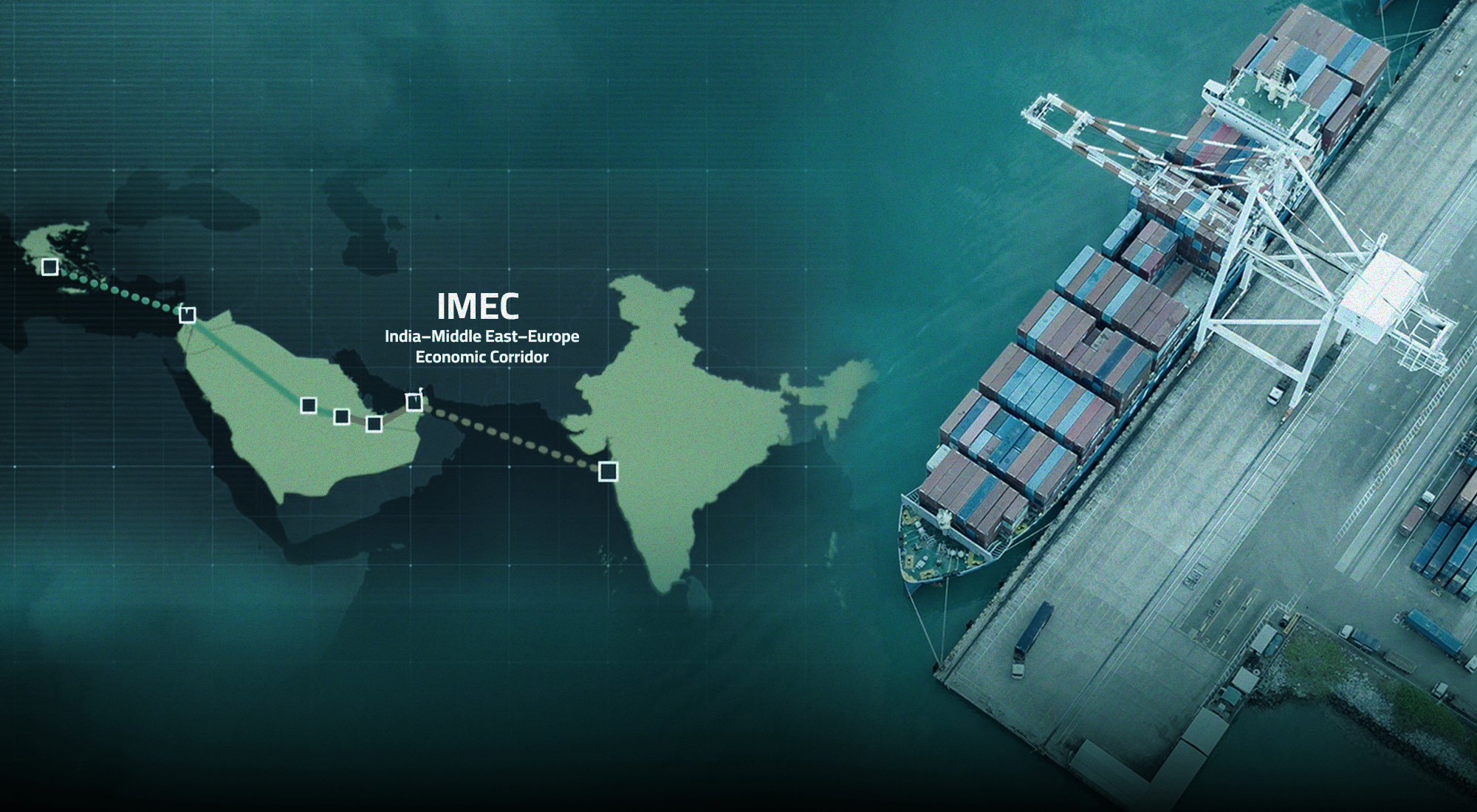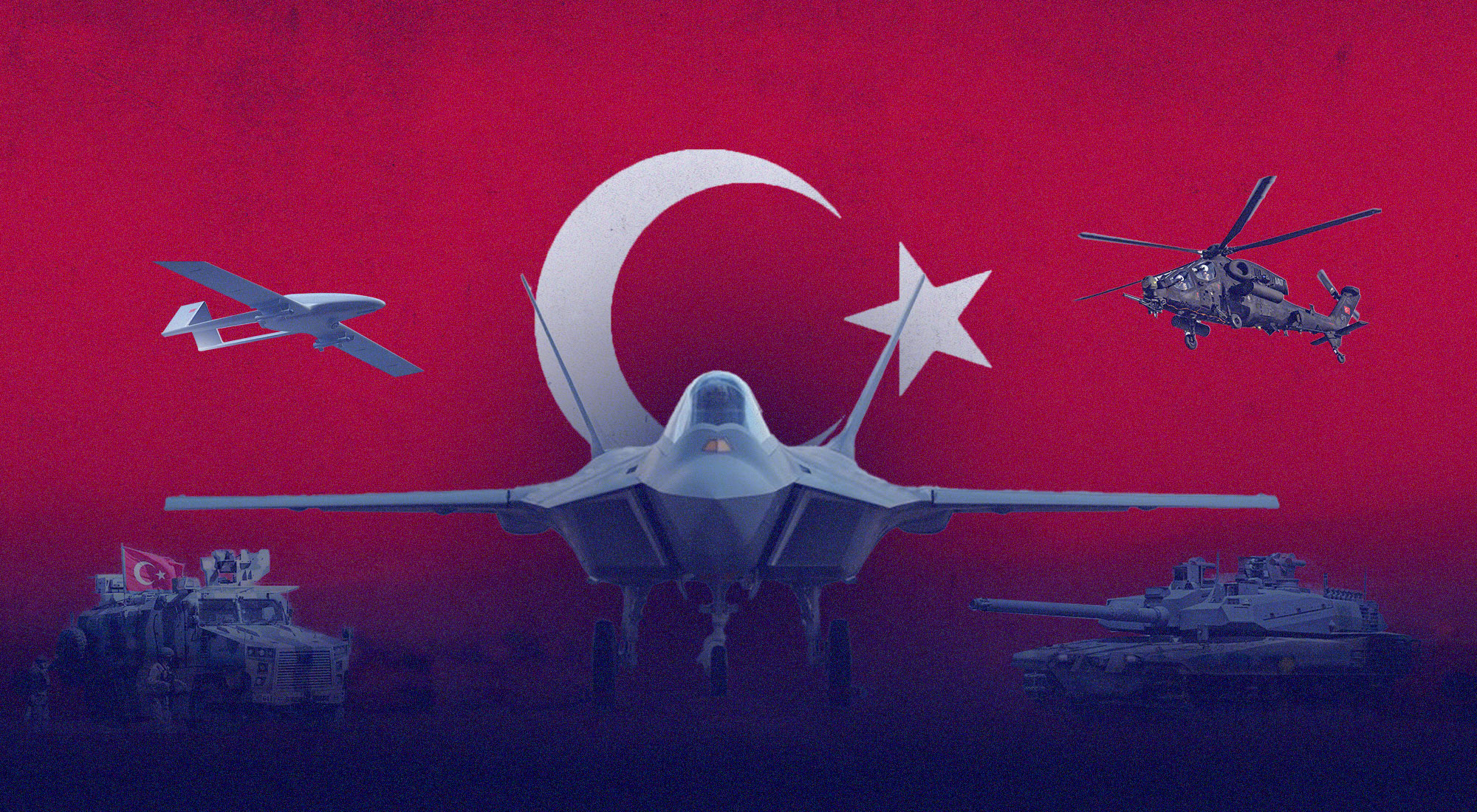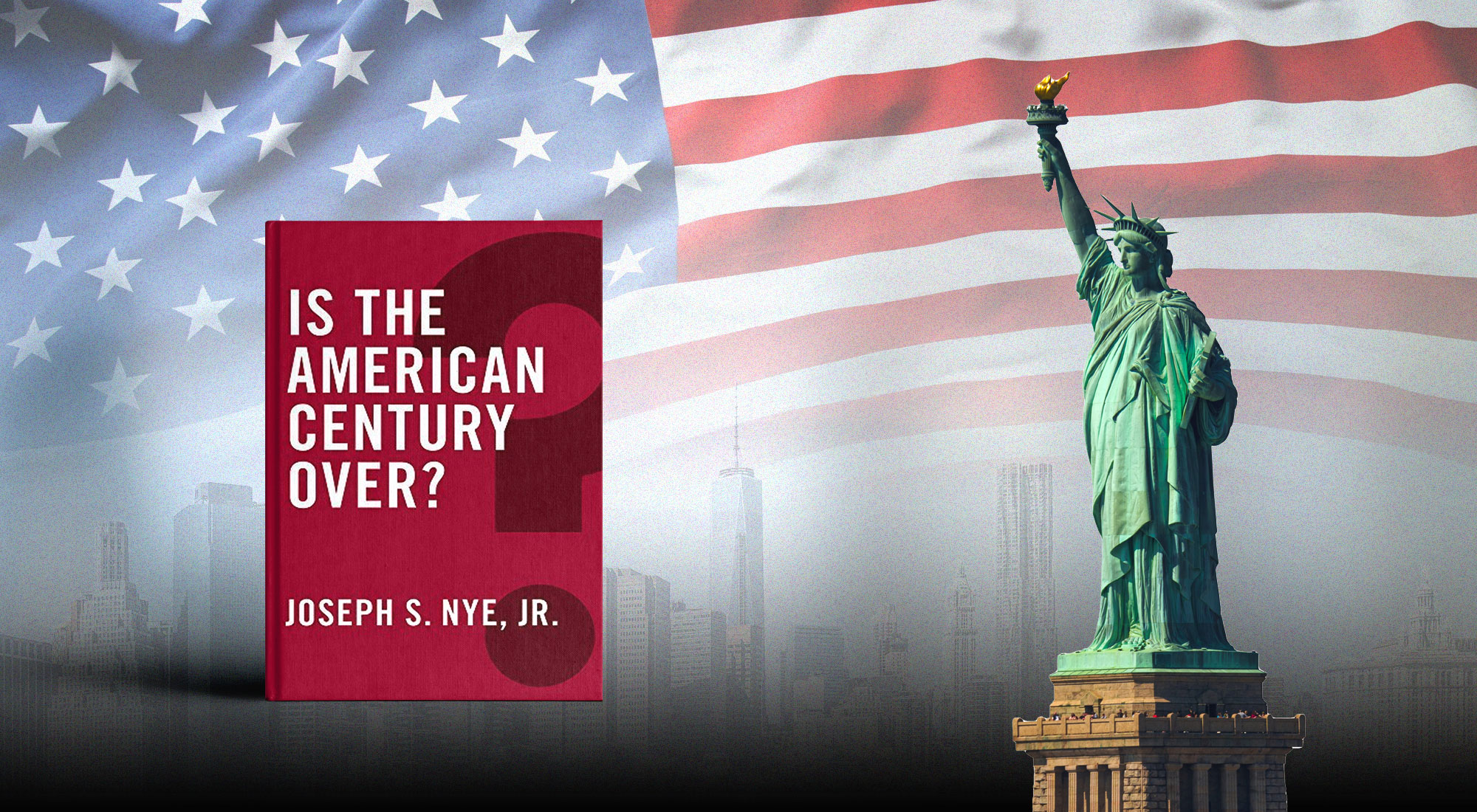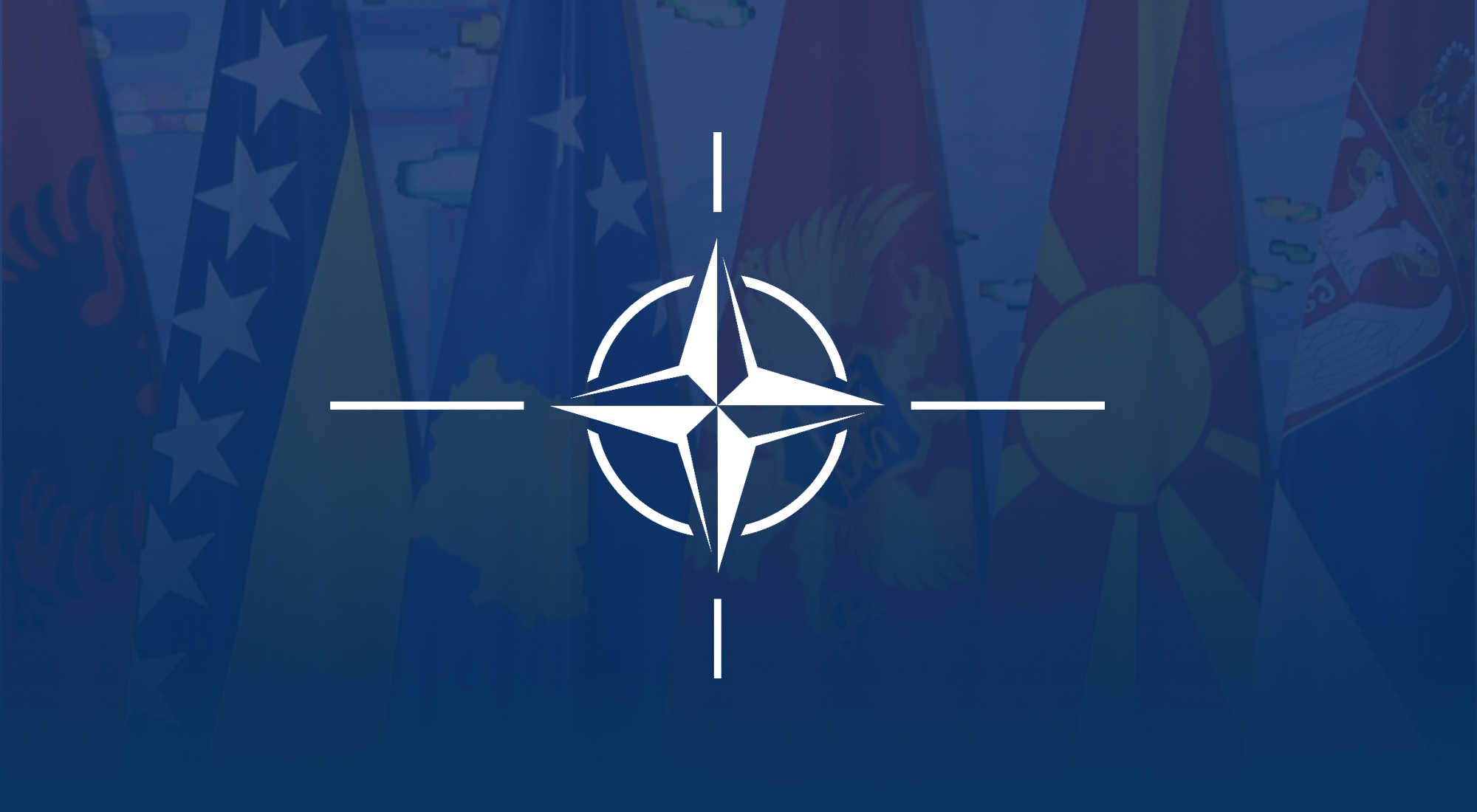In recent years, the world has been forced to rethink how goods, energy, and ideas move across borders. The COVID-19 pandemic, the war in Ukraine, and instability in the Red Sea have all revealed that trade corridors are no longer just about economics—they are about resilience, influence, and survival. For India and Europe, this realization has added urgency to the creation of a dedicated India-Europe corridor that can connect the two regions more directly and securely. The proposal for the India-Middle East-Europe Economic Corridor (IMEC), unveiled at the 2023 G20 Summit, captured global attention by promising an integrated network of ports, railways, pipelines, and digital highways stretching from Mumbai to the Mediterranean.[1]
Turning this vision into reality, however, is complex. India has already committed to building a $9 billion deep-water port, while companies such as AM Green are laying the foundation for a $1 billion green fuels corridor with Europe’s Port of Rotterdam.[2] Political momentum is also growing: Prime Minister Narendra Modi’s outreach to Cyprus reflects how even smaller European states are becoming part of this connectivity project.[3] For Europe, the stakes are equally high. Amid efforts to “de-risk” from China, the corridor offers a way to anchor India more firmly in Europe’s long-term economic strategy.[4] Meanwhile, Gulf states, located at the geographic heart of this network, view the corridor as an opportunity to secure their place in future trade flows and strengthen their roles as key global connectors.[5]
Every major corridor, however, is shaped by competing interests and geopolitical uncertainty. Regional instability, overlapping projects like China’s Belt and Road Initiative (BRI), and the shifting pace of the global energy transition could all complicate progress. The question, then, is not whether the India-Europe corridor matters—it clearly does—but what form it will take. This Insight explores the most plausible future scenarios for the corridor and what they reveal about the changing dynamics of global power and connectivity.
The Corridor’s Strategic Significance
The India-Europe corridor represents far more than a set of trade routes—it embodies a shared effort to redefine how regions connect in an increasingly multipolar world.
For India, the corridor offers an opportunity to diversify economic partnerships and reduce dependence on any single market. Europe is already one of India’s largest trading partners, but the corridor could provide faster and more reliable access to advanced markets in technology, pharmaceuticals, renewable energy, and high-value manufacturing.[6] Beyond boosting trade volumes, it enhances India’s geopolitical standing. By physically linking itself westward, India strengthens its image as a bridge between Asia and Europe and asserts a greater role in global affairs.[7]
For Europe, the corridor arrives at a critical moment. The European Union’s push to “de-risk” from China has made India an increasingly valuable partner for secure supply chains and digital collaboration.[8] With its vast consumer base, thriving technology sector, and expanding renewable energy capacity, India aligns closely with Europe’s long-term economic and environmental goals. The corridor also reinforces Europe’s green transition by enabling the transport of clean fuels, as shown by recent cooperation on a green fuel corridor connecting India to Rotterdam.[9] Through such initiatives, the project becomes not just about connectivity—but about resilience and competitiveness in a changing global order.
The Gulf states occupy a central position in this evolving network. Their strategic geography makes them indispensable transit hubs, while their economic diversification plans create strong incentives to participate.[10] Involvement in the corridor offers tangible benefits—infrastructure investment, logistics expansion, and access to new energy partnerships—as well as symbolic value, positioning them as essential actors in future global trade.
Finally, the corridor carries symbolic importance. It is widely seen as a multipolar alternative to China’s Belt and Road Initiative (BRI).[11] While the BRI has been criticized for fostering dependency and consolidating influence, the India-Europe corridor projects a different vision—one based on shared interests and cooperative development. In this sense, the corridor is not only about connecting ports and pipelines; it is about reimagining globalization through collaboration rather than control.
Current Developments and Momentum
The India-Europe corridor has moved beyond theoretical discussions; it is now beginning to materialize with tangible investments and political collaboration.
India’s increasing dedication to enhancing its infrastructure capacity is central to this progress. In June 2024, New Delhi approved the construction of a $9 billion deep-water port at Vadhavan. The port is set to accommodate the largest container ships in the world, positioning India as a significant contender in global maritime trade.[12] New Delhi is focused on establishing India as a central player in global supply chains. This development, combined with continuous enhancements to logistics corridors and freight networks, demonstrates this.
Collaborating on energy has emerged as a crucial aspect of advancement. In early 2025, AM Green announced plans to collaborate with the Port of Rotterdam to establish a green fuel corridor connecting India and Europe. The partnership had a value of $1 billion.[13] This project supports the climate objectives of both regions: Europe aims to become greener, while India seeks to establish itself as a leading exporter of renewable fuels such as ammonia and green hydrogen. It demonstrates that trade connections are increasingly linked to sustainability and emerging technologies.
Political ties between India and Europe have strengthened significantly. The EU-India Trade and Technology Council (TTC) has officially announced that both parties will collaborate on digital policy, clean energy, and enhancing the resilience of the supply chain.[14] Prime Minister Narendra Modi’s diplomatic efforts towards Cyprus indicate India’s intention to forge partnerships beyond merely the largest European economies. It aims to incorporate smaller, strategically positioned states into the corridor framework.[15]
Momentum is also building at the regional level. Leaders in Punjab, located in northern India, have proposed that the state become India’s “gateway to Eurasia.” They emphasize the significance of rail and road connections in bolstering maritime links.[16] The national and regional projects demonstrate that the corridor is becoming a reality; it is being constructed gradually through collaboration in infrastructure, energy, and politics.
Challenges and Risks
While there is hope for the India-Europe corridor, its long-term sustainability remains ambiguous. The project will encounter several hurdles in the next decade, including political instability and economic constraints. The resolution of these difficulties may dictate whether it attains significant worldwide success or remains an unrealized ambition.
The world is currently facing instability, which stands as the primary and most significant issue. The corridor runs through the Middle East, a region crucial for strategic interests, though it faces significant political instability. This region has been influenced by conflict, changing partnerships, and issues related to energy supply for many years.[17] If tensions escalate in the Gulf, the Levant, or the Red Sea, the routes of the corridor may be at risk. The success of the project relies not only on infrastructure but also on effective diplomacy and maintaining peace in the region.
Strategic competition adds another layer of complexity. The BRI from China remains an effective means for fostering global connections among people. Substantial financial resources are allocated to it, and it has built significant infrastructure throughout Asia, Africa, and Europe.[18] India has the option to reach Europe via Iran and the Caspian Sea by utilizing Russia’s International North-South Transport Corridor (INSTC).[19] The India-Europe corridor should highlight its distinct advantages, such as openness, sustainability, and genuinely equitable partnerships, rather than replicating the criticized dependency models seen in other global initiatives.
Political backing will not remove economic uncertainties. Major infrastructure projects require continuous financial backing and a collective dedication. Many individuals struggle with dividing expenses, managing debt, or meeting the expectations of investors.[20] India and Europe continue to back protectionist trade policies, indicating that the long-awaited free trade agreement (FTA) will take even more time to finalize. This deal could make the corridor a real economic opportunity instead of just a diplomatic idea.[21] If it doesn’t happen, progress might remain merely theoretical, making it more challenging for the corridor to attract private investment.
Ultimately, the energy transition introduces a distinct layer of uncertainty. The $1 billion green fuel corridor connecting India and Rotterdam represents a significant advancement, demonstrating the potential for trade and environmental sustainability to coexist harmoniously.[22] The speed at which global markets embrace renewable energy will determine its success. If there is less demand for green fuels than anticipated, these projects may not succeed as intended, leading to significant infrastructure potentially remaining underutilized.
The future of the corridor hinges on factors beyond merely ports and pipelines. Politics and public opinion will significantly influence the outcome. The true challenge lies not just in the construction of the corridor between India and Europe, but in maintaining its operation amidst shifting political landscapes, economic difficulties, and the imperative for a more sustainable future.
Future Scenarios
The future of the India-Europe corridor is uncertain. Like all major connectivity projects, it will depend on policy choices, external crises, and how well its stakeholders can adapt. Three scenarios stand out as the best ways to think about its possible paths. Each one tells a different story about what the next ten years might be like.
Scenario 1: Strategic Convergence
Politics and economics work together in the best-case future. Should India and the European Union finally agree on a free trade deal that has been discussed for years, this would give trade and investment a major boost.[23] Under this scenario, the IMEC corridor would come to life: ships dock at India’s new deep-water port in Vadhavan, green fuels flow through Rotterdam, and Gulf states become digital and renewable energy hubs.[24] In this world, the corridor is more than just infrastructure; it stands for trust and a common goal. It shows that India is becoming a global supplier of goods, energy, and digital services, while for Europe, it is a step toward more secure supply chains. Gulf countries would enhance their economies through increased trade volumes, as well as their global standing as connectors of trade.[25]
Scenario 2: Competition That Is Not Well-Organized
The narrative could potentially unfold in a different, more somber direction. Given the ongoing political instability in the Middle East, key transit hubs may become less dependable.[26]At the same time, China’s BRI and Russia’s INSTC remain the most significant projects in the region.[27] The India-Europe corridor continues to consist of a combination of incomplete projects and symbolic declarations. Europe is getting frustrated with the slow FTA talks, and India is focusing on itself. The corridor is still there, but it’s more of a headline than a working network. Instead of bringing regions together, it shows how fragile big ideas can be in a world that is always changing.
Scenario 3: Resilience That Changes Over Time
The future is likely to lie somewhere in between the two scenarios above. The corridor extends ahead, though it does not follow a straight course. Positive developments are underway: the green fuel corridor is becoming operational, ports are improving, and technology partnerships are strengthening.[28] However, politics or financial issues have led to delays in certain areas. India and Europe fill in the gaps in different ways. For instance, the INSTC route that goes through Iran, or even shipping lanes in the Arctic that have opened up because of climate change.[29] The result is not a smooth road from Mumbai to the Mediterranean, but a flexible network that puts resilience ahead of speed. It might not look like the big plan that was first thought of, but it does show how messy and flexible trade is around the world right now.
Conclusion
The India-Europe corridor is more than just a commerce initiative; it’s a brave effort to change the way the world works. It connects Asia, the Gulf, and Europe, which is a sign of the promise of a world where no one power is in charge. The importance of the project comes from both the fact that it brings people together and the fact that it moves products, energy, and data across boundaries.[30]
But the way ahead is still unclear. The success of the corridor will depend on the political will in New Delhi, Brussels, and the Gulf capitals, as well as the stability of the Middle East, which has a history of shocks and rivalries.[31] Long-term investment in green and digital industries is just as crucial for the corridor to show the future of commerce instead of the past.[32] If these parts come together, the initiative might change globalization in a way that is more fair and strong.
In the end, the India-Europe corridor represents a test case for our time. The observer wonders whether multipolar globalization can be based on trust and working together, or if it will break apart because of competition and different ideas. The answer will not only determine the destiny of this corridor but also the fundamental character of global connection in the next decades.[33]
[1] The White House, Memorandum of Understanding on the Principles of an India–Middle East–Europe Economic Corridor, September 9, 2023, https://bidenwhitehouse.archives.gov/briefing-room/statements-releases/2023/09/09/memorandum-of-understanding-on-the-principles-of-an-india-middle-east-europe-economic-corridor/.
[2] “India Approves $9-Billion Port to Boost Trade with Europe,” Reuters, June 19, 2024, https://www.reuters.com/world/india/india-approves-9-billion-port-boost-trade-with-europe-2024-06-19/.; “AM Green Partners Rotterdam Port to Build $1 Bn Green Fuel Corridor from India to Europe,” The Economic Times, January 25, 2025.
[3] “India and Cyprus to Step up Defense, Maritime and Cybersecurity Cooperation, Indian PM Says,” AP News, September 9, 2024, https://apnews.com/article/cyprus-india-defense-cybersecurity-maritime-modi-imec-22f6e19d4a4554e9867473ed10a10324.
[4] European Parliament, “EU-India Strategic Partnership: A Roadmap to 2025,” 2020, https://www.europarl.europa.eu/cmsdata/240671/EU-India-roadmap-2025.pdf.
[5] Jyoti Vij, “India-Middle East-Europe Economic Corridor: A New Global Binding Force,” Gulf News, July 19, 2025, https://gulfnews.com/opinion/op-eds/india-middle-east-europe-economic-corridor-a-new-global-binding-force-1.500203227.
[6] European Parliament, “EU-India Strategic Partnership: A Roadmap to 2025.”
[7] Shairee Malhotra, “A New EU-India Strategic Agenda in 2025,” Observer Research Foundation, February 20, 2025, https://www.orfonline.org/research/a-new-eu-india-strategic-agenda-in-2025.
[8] European Parliament Research Service, India’s Connectivity Initiatives: A multi-faceted strategy, 2024, https://www.europarl.europa.eu/RegData/etudes/BRIE/2024/762471/EPRS_BRI%282024%29762471_EN.pdf.
[9] “AM Green Partners Rotterdam Port to Build $1 Bn Green Fuel Corridor from India to Europe,” The Economic Times, January 25, 2025, https://economictimes.indiatimes.com/industry/renewables/am-green-partners-rotterdam-port-to-build-1-bn-green-fuel-corridor-from-india-to-europe/articleshow/121413687.cms.
[10] Jyoti Vij, “India-Middle East-Europe Economic Corridor: A New Global Binding Force.”
[11] Alberto Rizzi, “The Infinite Connection: How to Make the India-Middle East-Europe Economic Corridor Happen,” European Council on Foreign Relations (ECFR), April 23, 2024, https://ecfr.eu/publication/the-infinite-connection-how-to-make-the-india-middle-east-europe-economic-corridor-happen/.
[12] “India Approves $9-Billion Port to Boost Trade with Europe.”
[13] “AM Green Partners Rotterdam Port to Build $1 Bn Green Fuel Corridor from India to Europe.”
[14] Rajat Kathuria and Amaia Sánchez-Cacicedo “Tapping into the Momentum: The EU-India Trade and Technology Council,” Heinrich Böll Stiftung, May 2025, https://www.boell.de/sites/default/files/2025-06/tapping-into-the-momentum-the-eu-india-trade-and-technology-council.pdf.
[15] “India and Cyprus to Step up Defense, Maritime and Cybersecurity Cooperation, Indian PM Says.”
[16] “Bajwa Bats for Repositioning Punjab as India’s Gateway to Eurasia,” The Times of India, September 28, 2025, https://timesofindia.indiatimes.com/city/chandigarh/bajwa-bats-for-repositioning-punjab-as-indias-gateway-to-eurasia/articleshow/124195225.cms.
[17] Alberto Rizzi, “The Infinite Connection: How to Make the India-Middle East-Europe Economic Corridor Happen.”
[18] “The Belt and Road Initiative at Ten: A Reality Check,” Chatham House, October 2023, https://www.chathamhouse.org/2023/10/belt-and-road-initiative-ten-reality-check.
[19] United Nations ESCAP, “International North–South Transport Corridor: Opportunities and Challenges,” 2023, https://www.unescap.org.
[20] World Bank, “Reshaping Global Value Chains in a New Era of Reshoring,” 2023, https://www.worldbank.org/en/topic/trade/publication/reshaping-global-value-chains.
[21] European Parliament Research Service, “India’s Connectivity Initiatives: A multi-faceted strategy.”
[22] Ibid.
[23] European Parliament, “EU-India Strategic Partnership: A Roadmap to 2025.”
[24] “India Approves $9-Billion Port to Boost Trade with Europe.”; “AM Green Partners Rotterdam Port to Build $1 Bn Green Fuel Corridor from India to Europe.”
[25] Jyoti Vij, “India-Middle East-Europe Economic Corridor: A New Global Binding Force.”
[26] Alberto Rizzi, “The Infinite Connection: How to Make the India-Middle East-Europe Economic Corridor Happen.”
[27] “The Belt and Road Initiative at Ten: A Reality Check.”; United Nations ESCAP, “International North–South Transport Corridor: Opportunities and Challenges.”
[28] Alberto Rizzi, “The Infinite Connection: How to Make the India-Middle East-Europe Economic Corridor Happen.”
[29] World Bank, “Reshaping Global Value Chains in a New Era of Reshoring.”
[30] The White House, Memorandum of Understanding on the Principles of an India–Middle East–Europe Economic Corridor.
[31] Alberto Rizzi, “The Infinite Connection: How to Make the India-Middle East-Europe Economic Corridor Happen.”
[32] “AM Green Partners Rotterdam Port to Build $1 Bn Green Fuel Corridor from India to Europe.”
[33] World Bank, “Reshaping Global Value Chains in a New Era of Reshoring.”








